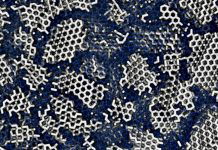
Researchers have made an exciting discovery by directly observing polar Bloch points in strained ferroelectric films.
This breakthrough was achieved by a team from the Institute of Metal Research (IMR) of the Chinese Academy of Sciences (CAS) and collaborators from the Institute of Physics of CAS.
Their findings were published in Nature Communications.
A Bloch point is a special point where the field vectors point in nearly all directions. In magnetics, it connects classical and quantum magnetism, but it had not been directly observed. In ferroelectrics, Bloch points had only been predicted in a few cases until now.
The researchers built on their previous work with polar meron lattices.
They modeled a tensile-strained ultrathin ferroelectric PbTiO3 film sandwiched between symmetric electrodes. Using phase-field simulations, they discovered that as the electrode thickness increased, merons transformed into Bloch points.
To observe this phenomenon, the team grew a trilayer film of SrRuO3/PbTiO3/SrRuO3 on a SmScO3 substrate using pulsed laser deposition. They then used advanced electron microscopy to image the polarization configuration of the polar Bloch points.
Their simulations also predicted a region of negative capacitance around each polar Bloch point.
The discovery of polar Bloch points is significant because it expands the understanding of topological ferroelectric domain structures. This finding could lead to new applications in future integrated circuits and low-power electronic devices.
By manipulating these unique points in ferroelectric films, scientists can develop innovative applications that benefit various technological fields.
This breakthrough showcases the importance of ongoing research in ferroelectrics and highlights the potential for new discoveries that could revolutionize electronic devices.



